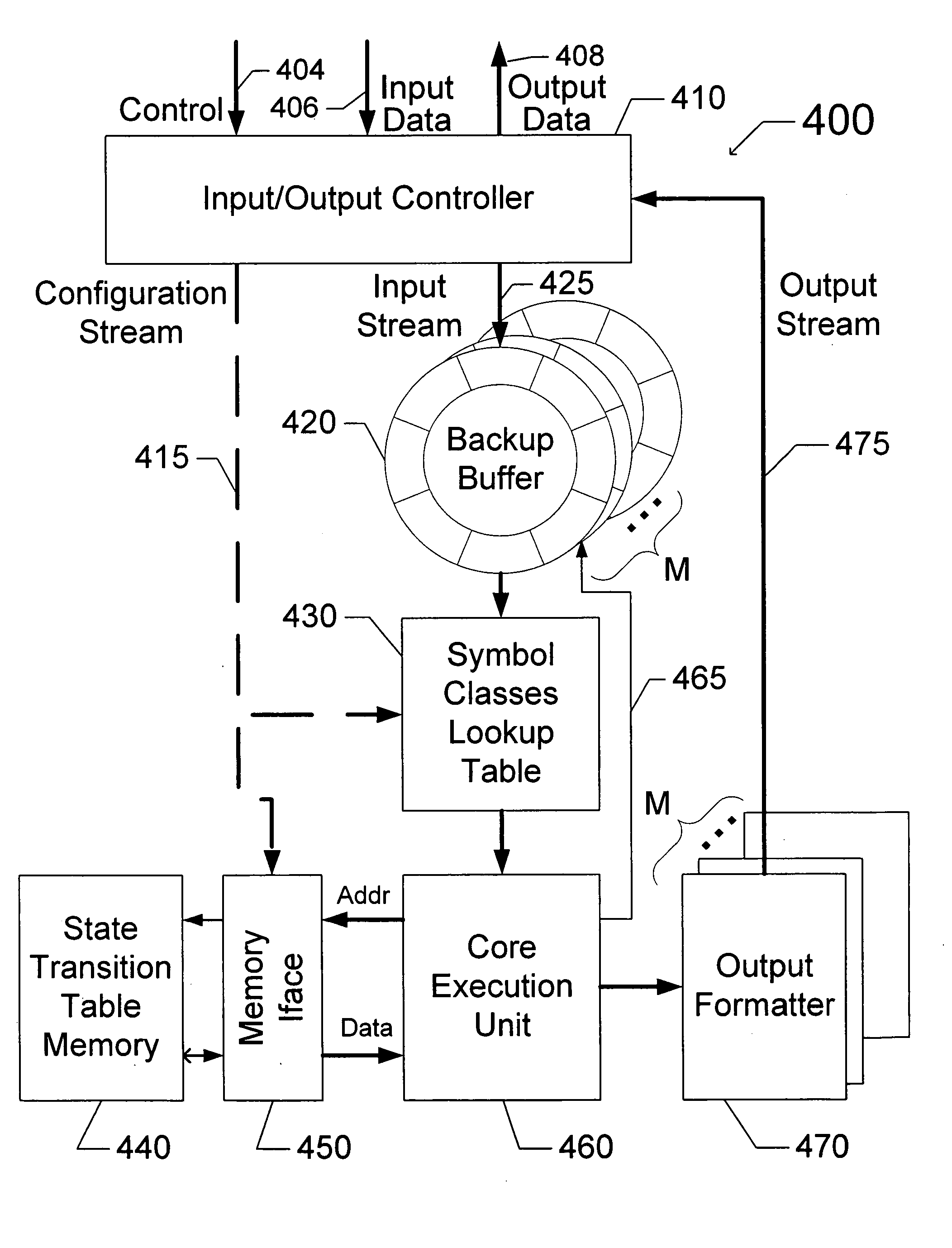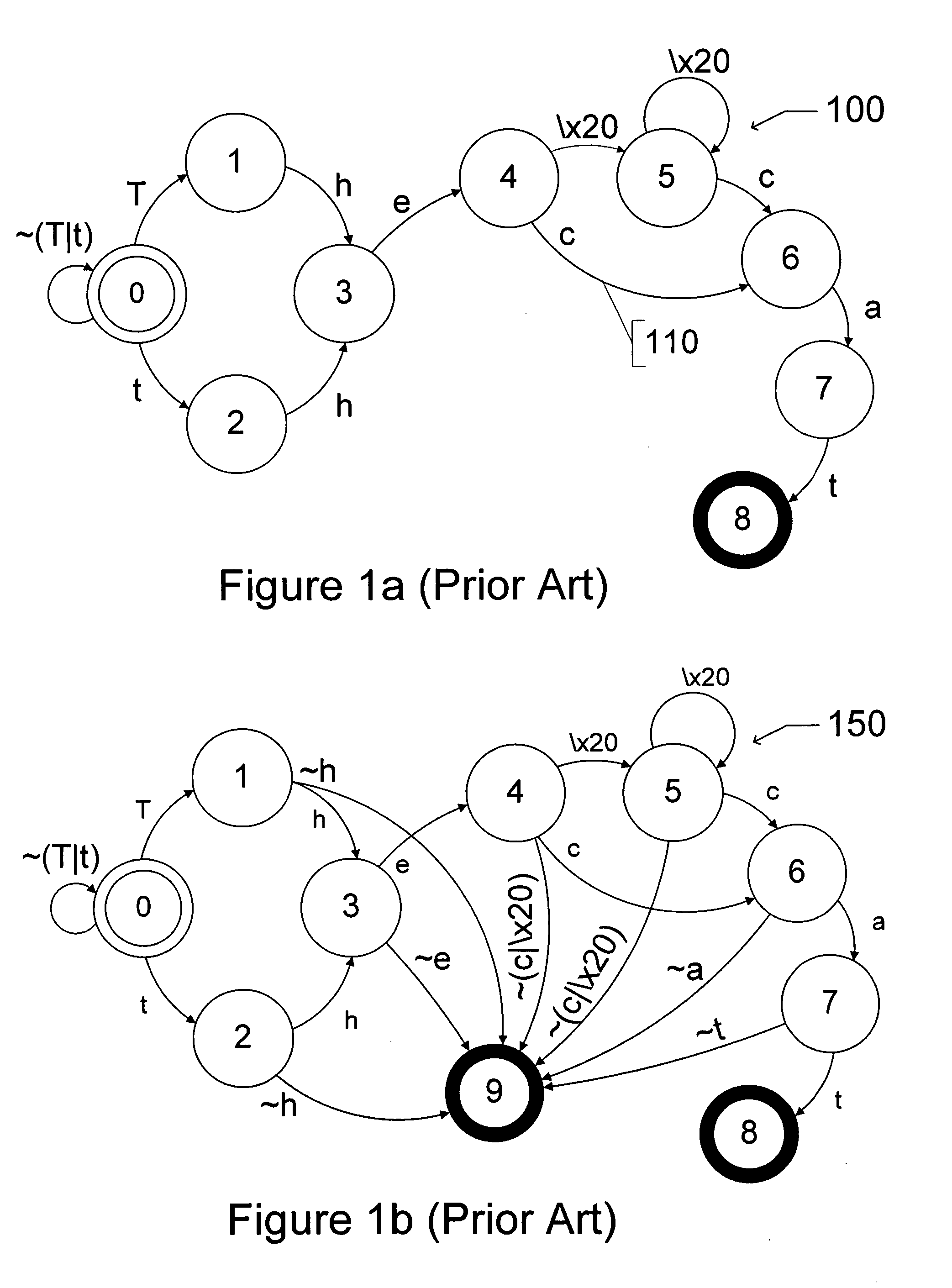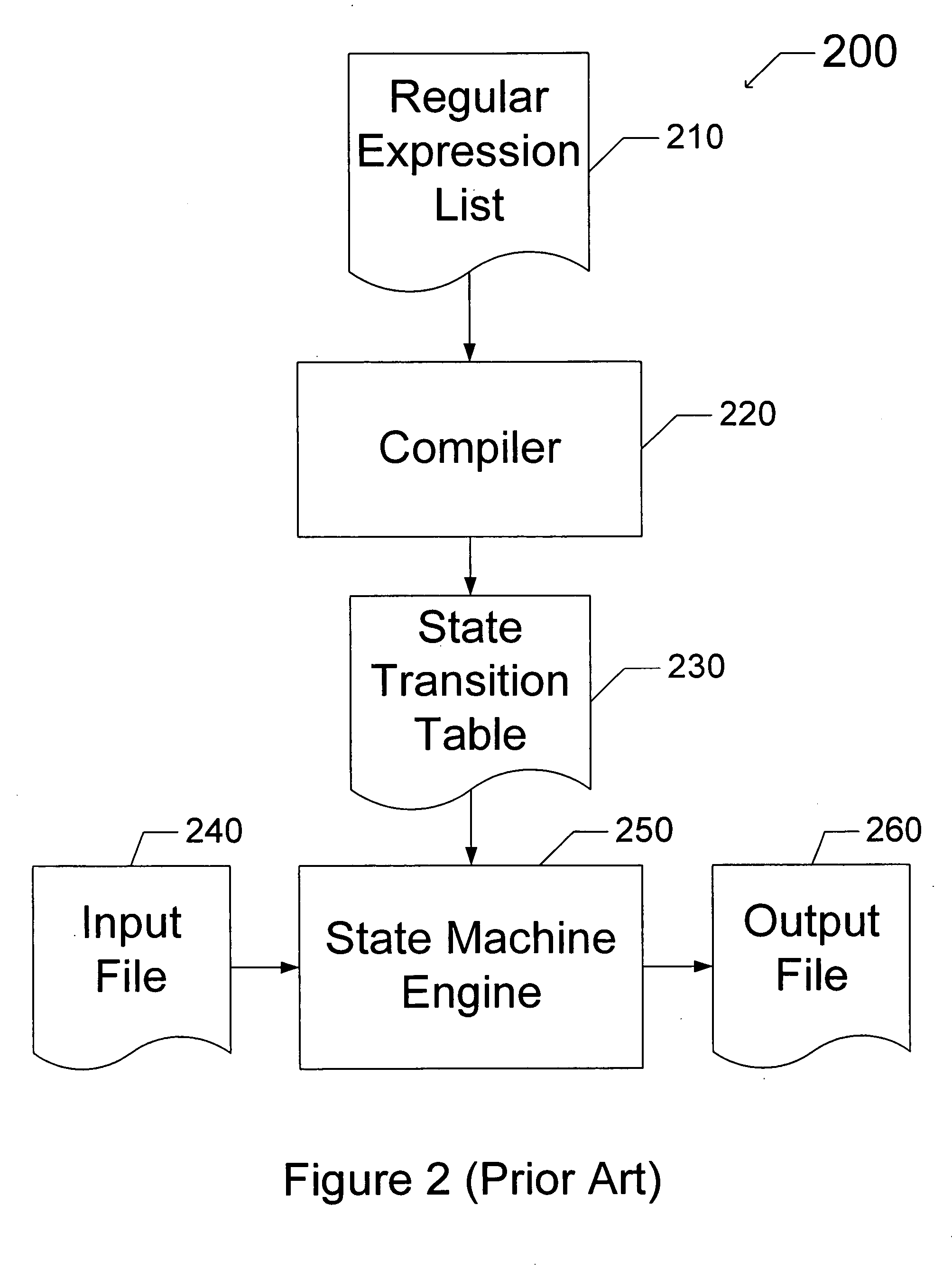Regular expression acceleration engine and processing model
a processing model and acceleration engine technology, applied in the field of regular expression acceleration engine and processing model, can solve the problems of many unwanted incoming information sent in the form of spam and undesired outgoing information containing corporate secrets, and the internet is rife with security threats, and can not be used for business purposes,
- Summary
- Abstract
- Description
- Claims
- Application Information
AI Technical Summary
Problems solved by technology
Method used
Image
Examples
Embodiment Construction
[0115] Embodiments of the invention will now be described with reference to the accompanying figures, wherein like numerals refer to like elements throughout. The terminology used in the description presented herein is not intended to be interpreted in any limited or restrictive manner, simply because it is being utilized in conjunction with a detailed description of certain specific embodiments of the invention. Furthermore, embodiments of the invention may include several novel features, no single one of which is solely responsible for its desirable attributes or which is essential to practicing the inventions herein described.
[0116]FIG. 4 is a hardware block diagram of a State Machine Engine 400 that is one embodiment of the state machine engine 250 of FIG. 2. In the exemplary embodiment of FIG. 4, the State Machine Engine 400 includes an Input / Output Controller 410 configured to receive Control signals 404 and Input Data 406, and further configured to send Output Data 408. The ...
PUM
 Login to View More
Login to View More Abstract
Description
Claims
Application Information
 Login to View More
Login to View More - R&D
- Intellectual Property
- Life Sciences
- Materials
- Tech Scout
- Unparalleled Data Quality
- Higher Quality Content
- 60% Fewer Hallucinations
Browse by: Latest US Patents, China's latest patents, Technical Efficacy Thesaurus, Application Domain, Technology Topic, Popular Technical Reports.
© 2025 PatSnap. All rights reserved.Legal|Privacy policy|Modern Slavery Act Transparency Statement|Sitemap|About US| Contact US: help@patsnap.com



